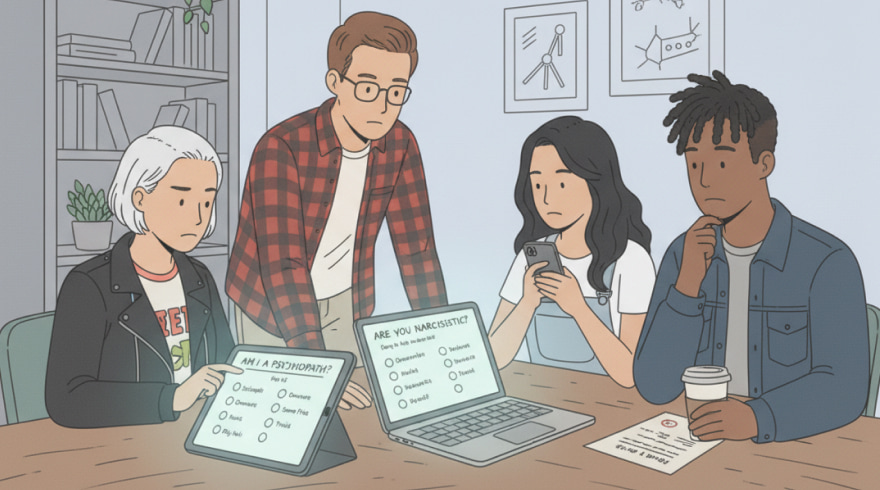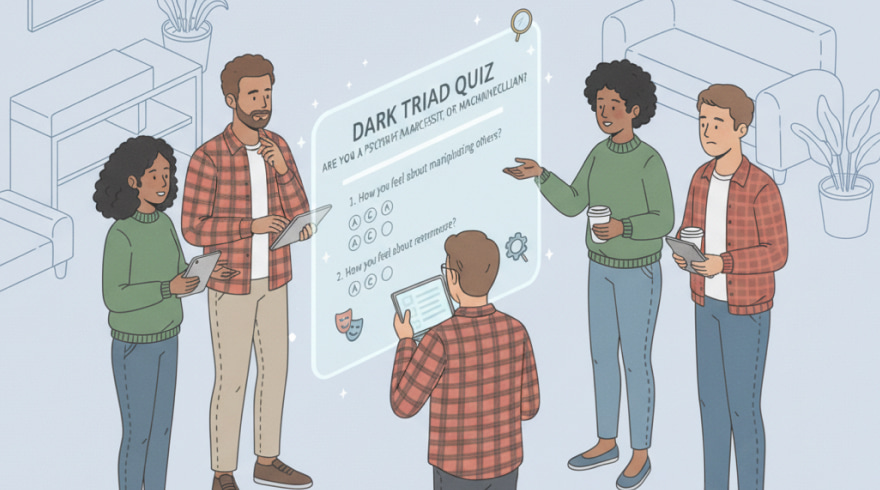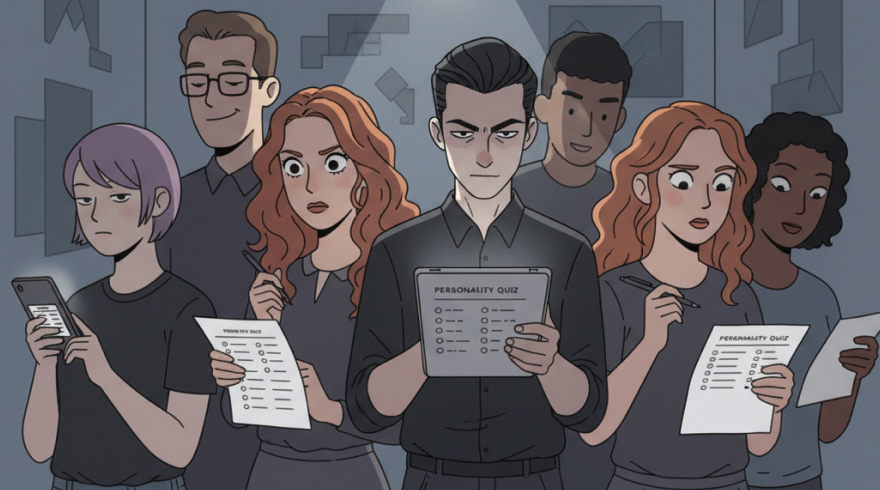Comprehensive Guide to Online ASPD Screenings and Self-Assessments
- 4 November 2025

Understanding ASPD Screenings: Purpose, Scope, and Boundaries
People search for clarity when persistent conflict, impulsive choices, or strained relationships start to feel like a repeating loop. A well-constructed screening can organize those impressions into patterns, illuminating traits linked to rule-breaking, empathy gaps, and manipulativeness. Still, it is essential to recognize the difference between a brief self-check and a clinical assessment. Licensed clinicians consider history, context, collateral reports, and differential diagnoses, while a quick questionnaire offers a limited snapshot. Read any results as information, not a label, and approach them with curiosity rather than fear or defensiveness. If you ever feel overwhelmed or worry about safety for yourself or others, seek immediate help from local emergency services or a crisis line in your region.
Online questionnaires can’t diagnose a personality disorder and should never replace a qualified evaluation. That said, many people begin with an antisocial personality disorder quiz to get a structured snapshot of patterns like impulsivity, deceitfulness, and disregard for boundaries. The aim is to prompt reflection, encourage honest self-observation, and suggest whether a deeper conversation with a professional might be useful. Consider it a map legend, helpful for orientation, but not the territory itself.
- Screenings organize experiences into meaningful themes and highlight trends over time.
- Results may flag elevated risk areas and prompt healthier coping or boundary-setting.
- Scores are influenced by mood, insight, and context; they are not definitive truth.
- Only a clinician can determine a diagnosis through a comprehensive interview process.
- Use compassionate self-honesty; minimizing or exaggerating undermines your insight.
How Assessments Gauge Traits: Format, Reliability, and Cautions
Most self-report tools rely on clear statements rated along a scale from “never” to “often.” Items probe conduct since adolescence, interpersonal style, emotional regulation, and attitudes toward norms. High-quality instruments borrow concepts from established research, such as criterion validity, internal consistency, and test–retest stability. Because these traits can be sensitive, trustworthy screeners avoid glamorizing callousness or criminality and emphasize context. They also remind users that environmental stress, trauma history, and substance use can mimic or amplify antisocial features without defining a fixed personality pattern.
Design features matter. In practice, one common format resembles an antisocial personality quiz with Likert-style items and situational prompts for balance. Some tools blend direct statements (“I blamed others for my mistakes”) with scenarios (“A friend confronts me after I break a promise; how do I respond?”) to reduce response bias. Honest answers increase the usefulness of the feedback; defensive answering or thrill-seeking responses distort the picture and reduce interpretability.
| Trait domain | Example prompt | Higher score suggests | What it does not prove |
|---|---|---|---|
| Deceitfulness | “I bend the truth to get what I want.” | Patterned dishonesty or manipulative tactics | A criminal intent or permanent character label |
| Impulsivity | “I act first and think later when I’m excited.” | Low inhibition and risk-prone decision-making | A neurological disorder or inevitable relapse |
| Remorse/Empathy | “I rarely feel bad after hurting someone.” | Callous affect and limited empathic concern | Incapacity for growth or moral development |
| Responsibility | “Rules don’t apply if they slow me down.” | Norm violation and entitlement to exceptions | Legal guilt or a precise DSM-5-TR diagnosis |
| Aggression | “I intimidate others to get my way.” | Hostile dominance and coercive strategies | Future violence or danger in every situation |
Use any summary cautiously and pair it with reflection on context, stressors, and supports. Scores can be influenced by sleep loss, intoxication, or a recent argument, so revisit results after a calmer period to see whether patterns persist. If feedback aligns with long-standing difficulties, booking an appointment with a mental health professional is the most reliable next step.
Benefits of Taking a Self-Check and Using Results Wisely
People often want a straightforward way to decode interpersonal friction or recurring conflicts at work, school, or home. Curiosity or concern might lead someone to an am i antisocial quiz during a moment of reflection, as a low-stakes first step. When approached thoughtfully, brief questionnaires can reduce confusion and help you notice trends you’ve rationalized or overlooked. They also spark conversations with trusted people in your life, clarifying expectations and boundaries. The outcome is not a verdict; it’s a mirror you can use to decide which habits to keep, which to tweak, and which to examine in therapy. Over time, even small insights, like recognizing how you justify breaking commitments, can make conflict less explosive and relationships more predictable.
- Clarity: Translate vague concerns into identifiable patterns and triggers.
- Motivation: Turn fleeting curiosity into concrete goals for change.
- Communication: Share a concise summary with a clinician to jumpstart evaluation.
- Safety: Spot red flags early and plan preventive steps rather than reacting late.
- Tracking: Revisit the same items later to observe improvement or drift.
Remember that benefit comes from honesty and follow-through. If results are elevated, use them as a cue to seek a comprehensive evaluation, explore skills training (such as emotion regulation or problem-solving), and consider lifestyle shifts that reduce risk, sleep, substance use moderation, and structured routines are simple places to start.
Practical Tips for Responsible Self-Assessment
Set aside quiet time and approach any screening with a calm, sober mind. Read each statement slowly and imagine your behavior across months or years, not just the last heated argument. If an item makes you uncomfortable, that sensation can be informative, defensiveness sometimes signals a pattern worth unpacking. Be specific: “sometimes” should refer to frequency you can roughly estimate, not a one-off incident. Keep your answers grounded in real situations, and avoid guessing what you think a “good” person should say. After you receive feedback, jot down examples from your life that illustrate the themes; concrete memories make future conversations with a clinician clearer and more productive.
- Pick a distraction-free environment and allow 10–15 minutes of focused attention.
- Answer based on typical behavior since mid-adolescence, not isolated episodes.
- Avoid taking the same screener repeatedly within a short window; wait a few weeks.
- Pair results with input from someone who knows you well, if safe and appropriate.
- If results raise safety concerns, contact a licensed professional or urgent services.
Finally, place results in context with stress, trauma history, and co-occurring issues like substance use or ADHD. Nuanced patterns require nuanced help, and that is exactly what a qualified mental health professional can provide.
FAQ: Quick Answers About ASPD Screenings
Can a short online screening diagnose a personality disorder?
No. A diagnosis requires a structured clinical interview, developmental history, and a full risk and differential assessment. Screenings highlight patterns and guide next steps; they are not definitive.
What should I do if my score is high?
Use the result as a prompt to consult a licensed clinician. Bring specific examples of behaviors, conflicts, and timelines. If you are worried about immediate safety, contact local emergency services or a crisis hotline right away.
How accurate are self-report questionnaires?
Accuracy varies with item quality and your honesty. Good tools show acceptable reliability, but mood, intoxication, and defensiveness can skew answers. Independent evaluation is the gold standard for clarity.
Is antisocial behavior the same as Antisocial Personality Disorder?
No. Occasional rule-breaking or anger does not equal a personality disorder. ASPD involves pervasive, long-standing patterns across settings, beginning in adolescence, and must be distinguished from other conditions.
Should teens take these screenings?
Adolescents can use age-appropriate tools with guidance from a parent or clinician. Because identity and behavior are still developing, professional input is essential before drawing conclusions or making big decisions.
Latest News
-
![Comprehensive Guide to Sociopathy Self-Assessments and Quizzes]()
- 10 November, 2025
-
![A Complete Guide to Understanding the Dark Triad Quiz]()
- 7 November, 2025
-
![The Guide to Narcissism Self-Assessments: Insights, Benefits, and Smart Next Steps]()
- 6 November, 2025



